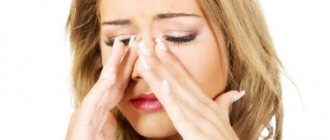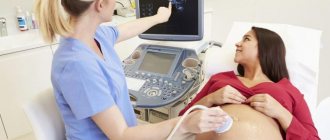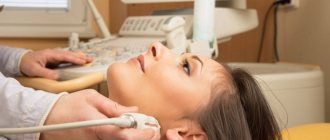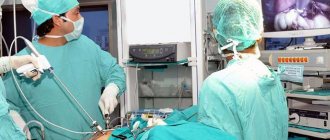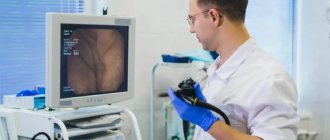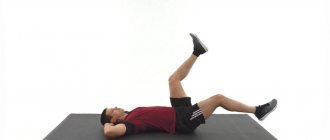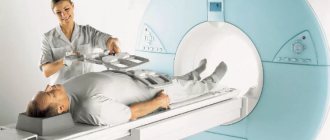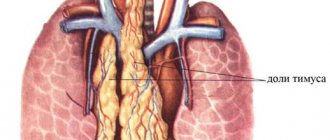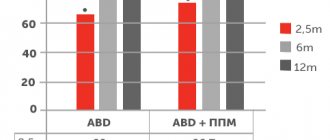Why is bronchoscopy performed?
The study is carried out for both therapeutic and diagnostic purposes.
Diagnostic bronchoscopy helps to clarify the diagnosis if the patient is suspected of having tumors of the respiratory tract (lung cancer), or it is necessary to decide on a treatment plan for an already confirmed process, or to understand why the patient has a narrowing of the respiratory tract. During this procedure, the doctor takes tissue samples (performs a biopsy) for subsequent histological examination.
The use of bronchoscopy and bronchial lavage makes it possible to extract the substrate (contents) from the alveoli and small bronchi.
A bronchoscope helps to find and remove foreign objects from the airways, wash out mucus plugs; it is used if it is necessary to install a stent - a structure that strengthens the airways and prevents them from collapsing.
Therapeutic bronchoscopy is necessary for patients on mechanical ventilation (artificial ventilation), it helps maintain the breathing tube in the correct position.
What is the indication for diagnostic bronchoscopy?
Bronchoscopy is used if the patient is suspected of having:
· neoplasms of the bronchi or trachea;
· abnormalities in the structure of the bronchi and trachea;
foreign body in the respiratory tract;
· hemoptysis;
pulmonary atelectasis.
Using diagnostic bronchoscopy, differential diagnosis of diseases with similar manifestations is carried out. It is also used for frequently occurring pneumonia in order to obtain the contents of the respiratory tract for bacteriological analysis.
What are the indications for bronchoscopy?
There may be different indications for diagnosis and treatment using an endoscope. A study for diagnostic purposes is prescribed in the following cases:
- frequent bronchitis, pneumonia, hemoptysis, shortness of breath, the origin of which is unknown;
- suspicion of tuberculosis, cystic fibrosis and other similar lung diseases;
- the appearance of neoplasms and foreign bodies on x-rays (even if they are not visible, the doctor may suspect them);
- burns of the lungs and other organs of the respiratory system.
Bronchoscopy is also often used to treat or relieve symptoms. The procedure is prescribed if necessary:
- stop the bleeding;
- ensure cleansing of the bronchi from sputum and viscous secretions;
- remove foreign bodies and small benign formations;
- inject medications directly into the lung.
Will it hurt during bronchoscopy?
Before the examination begins, the endoscopist irrigates the patient's throat with an anesthetic, which helps reduce the urge to vomit. After this, he gradually inserts the bronchoscope into the airways - while advancing the device, it is important for the patient to focus on rapid and shallow breathing. It is important to know that the diameter of the endoscope is so small that it cannot cause breathing difficulties. Its advancement may cause discomfort, but there will be no pain, and even the biopsy will be painless, since the bronchial mucosa does not have pain receptors.
Bronchoscopy can be performed under drug sedation (“in sleep”) if the patient has no contraindications to its implementation.
Concept of bronchoscopy. Conditions for its maximum accuracy.
Bronchoscopy (tracheobronchoscopy, laryngotracheobronchoscopy, FBS is considered the most accurate method of examining the trachea, larynx, large and small bronchi from the inside using a fiberoptic bronchoscope (a special flexible device for examining the tracheobronchial tree). CT (computed tomography) and radiography are used to assess the condition of lung tissue (not the bronchi If we talk about CT and bronchoscopy, these are two examination methods that are mandatory for an accurate diagnosis of the chest organs and are designed to complement each other.
Bronchoscopy procedure (how digital bronchoscopy is performed during sleep).
At CEMH, bronchoscopy is performed by expert specialists with 20 years of successful experience. During the examination, OLYMPUS endoscopic technology with the possibility of digital photography is used.
Before bronchoscopy, the patient receives a consultation with an endoscopist and an anesthesiologist, who carefully study the findings of a computed tomography scan of the chest organs and other medical data available to the patient. Elderly people, as well as patients with concomitant diseases, are recommended to take with them all medical documents that the patient has: ECG, certificates, extracts, etc. The anesthesiologist needs to review these documents to make a decision about additional manipulations during the examination.
Bronchoscopy is performed with anesthesia and in a state of sedation - short-term shallow sleep (has nothing to do with anesthesia). Sleep lasts no more than 10-15 minutes. After the examination is completed, the patient immediately wakes up, the sedation process itself, as well as awakening, is comfortable.
During the examination, the endoscopist examines using an endoscope: the bronchi, trachea, and laryngopharynx. In some cases, additional diagnostic procedures are performed: bronchial lavage for microbiological culture for sensitivity to antibiotic drugs and phages, biopsy, sanitation of the tracheobronchial tree with antibacterial drugs, instillation of drugs, etc.
Under sedation, during operative bronchoscopy, removal of benign neoplasms (tumors) of the tracheobronchial tree and larynx can also be performed, which include: papillomas, polyps, singer’s nodules, foci of hyperplastic laryngitis, and other operations. During the entire preparation and conduct of the operation, as well as after it, the patient does not feel any discomfort. An experienced anesthesiologist monitors the patient’s condition during short-term sleep.
What do you get after completing the examination (Digital bronchoscopy in a dream):
- Examination protocol with photographic material
- Consultation with a specialist
The patient recovers completely after the examination within 30 minutes and can leave our medical center unaccompanied.
Contraindications to the examination (Digital bronchoscopy during sleep):
The first and only absolute contraindication is intolerance to the drug Lidocaine . This drug is used in conjunction with putting the patient to sleep for local anesthesia of the larynx and other areas of the tracheobronchial trunk. Please note that elderly people and patients with concomitant diseases are required to consult an anesthesiologist before undergoing bronchoscopy to determine individual contraindications.
Indications for examination (Digital bronchoscopy during sleep):
The main symptoms that are indications for examination:
- Prolonged cough
- For smokers with more than 5 years of experience (in this case, screening is carried out, or in other words, preventive and diagnostic bronchoscopy.).
- Preventive diagnosis of neoplasms (including malignant ones). Bronchoscopy is the most important of the basic tests for detecting malignant tumors, which makes it possible to find very small tumors, which allows doctors to prevent their development.
- Lung tumors of close relatives - prevention.
- Chronical bronchitis. Bronchoscopy is sometimes prescribed by a pulmonologist to accurately identify the spectrum of microorganisms of the tracheobronchial tree if it is necessary to prescribe antibiotics.
- Blood when coughing (coughing up blood). An alarming symptom that may be a consequence of some forms of tuberculosis, chronic lung diseases, tumors or abscesses of the lungs, echinococcosis, bronchiectasis, pneumonia, infarction of the lung tissue, stagnation of blood in the lung tissue, etc.! When coughing, expectoration produces blood-streaked sputum, rust-colored sputum, or pure scarlet blood.
- COPD – Chronic obstructive pulmonary disease. In chronic diseases, bronchoscopy helps in assessing the condition of the bronchial mucosa, identifying microorganisms (aka pathogens) if the disease is infectious.
- Foreign bodies/lung atelectasis
Tuberculosis is one of the reasons for conducting an examination, but in our country the diagnosis of the disease is carried out only in special institutions. In our center, differential diagnosis for suspected tuberculosis is not carried out.
How to prepare for brochoscopy?
The preparation consists of two parts. The first part includes the general preparation of the patient for the study: psychological adaptation (acceptance of the upcoming procedure) and examinations.
1. The patient must consent to bronchoscopy. After the doctor explains in detail the sequence of actions during the study, the patient has the right to ask all the questions that interest him. For example, will it hurt, is anesthesia needed and what kind of it will be, how will you feel after the procedure, when can you start drinking, eating, smoking, etc.
2. The patient must inform the doctor if he has concomitant diseases, allergies, or diabetes.
3. The patient should inform the doctor if he is receiving insulin or anticoagulants.
4. Before bronchoscopy, you will need to perform the following examinations: X-ray of the lungs, ECG, donate blood tests.
5. The day before the procedure, it is prohibited to drink alcohol.
6. The study is performed on an empty stomach
(no need to follow a diet).
The second part consists of direct preparation
to the procedure.
1. The last meal should be no later than 8 hours before the procedure. If bronchoscopy is scheduled for the morning, then dinner should be planned no later than 18:00. It is advisable to choose foods for him that are quickly and easily digested.
2. Smoking is prohibited before the procedure.
3. Before the procedure, the doctor will ask you to remove (if any) contact lenses, dentures, bite correction plates, and piercings.
Manipulations with flexible apparatus
Today, a flexible bronchoscope is used more often, especially for diagnostics.
Six hours before the procedure you should not drink or eat.
The procedure is carried out in compliance with high sterility.
A patient who is in a supine or sitting position. For relaxation, a drug is administered, for example, Eufilin. Relaxation of the patient's body is important for the advancement of the device.
The patient should breathe shallowly, often: this neutralizes the gag reflex.
The device is inserted through the mouth or nostril. At the moment of deep inspiration, it is carried out through the glottis. Then they are moved into the bronchi by rotation.
The patient may feel pressure in breathing, but not pain.
First, the larynx and glottis are examined, then the trachea and bronchi. Thin bronchioles and alveoli of the lungs are inaccessible to the device.
The doctor gets the opportunity:
- Rinse the bronchi;
- Delete their contents;
- Carry out a biopsy, etc.
The patient feels numb for half an hour after the procedure. For the next two to three hours, he should not smoke or eat, nor should he drive a vehicle for eight to ten hours.
What will happen during a bronchoscopy?
The procedure takes place in an endoscopy room, which meets all sterility standards accepted for operating rooms. It can be performed on an outpatient basis.
1. The insertion of a bronchoscope is often accompanied by a gag reflex and pain when passing through the pharynx and nasal passage. If the patient does not have an allergic reaction to anesthetics, the endoscopist uses it to irrigate these surfaces a few minutes before the procedure.
2. Research is carried out in a sitting position: the patient sits on a chair and tilts his head slightly back. Your hands can be placed on your knees or between your legs.
3. The endoscopist gradually begins to insert the device through the lower nasal passage into the nasopharynx. When the device reaches the vocal cords, the doctor sprays them and the epiglottis with an anesthetic. If the patient is prone to nosebleeds or narrowing of the nasal passages, the bronchoscope is passed through the oral cavity.
4. The airways are devoid of pain receptors - bronchoscopy will not cause pain.
5. Using a bronchoscope, the doctor carefully examines the condition of the mucous membrane of the bronchial tree. If the diameter of the bronchoscope and the patient’s condition allow, then, in addition to the large bronchi, it is also possible to examine the branches.
6. If it is necessary to obtain material (bacteria, respiratory tract cells) for subsequent laboratory research, the doctor performs bronchial lavage. To do this, 20-100 ml of sterile liquid is injected into the lower respiratory tract, after which it is removed. Lavage does not interfere with the patient’s spontaneous breathing.
7. If it is necessary to obtain tissue samples for histological analysis, the doctor performs a biopsy. The tissue is removed using miniature forceps through the instrumental channel of the bronchoscope. The procedure does not cause pain.
What can and cannot be done after the procedure?
The patient may experience a feeling of numbness after using the anesthetic, so it is advisable to postpone drinking water and food for a while to avoid choking. 1-2 hours after the procedure, you can drink a few sips of water. If swallowing has been restored and the process does not cause discomfort, you can start eating and drinking.
You should refrain from smoking for 2 hours after bronchoscopy.
You should ask your doctor when you can start taking your medications.
If the study was carried out “in a dream”, then within 24 days after anesthesia the patient will not be able to drive a vehicle, and he will need accompanying persons in order to get home.
When not to do the procedure
The general serious condition of the person making the appointment may be the reason that bronchoscopy will be denied. The procedure is usually postponed to another time until the person feels better. But there are also absolute contraindications:
- arrhythmia that cannot be corrected, heart attack, stroke;
- acute respiratory failure, stenosis of the larynx, trachea stage III;
- problems with oxygenation during the procedure, etc.
If the patient is diagnosed with vena cava syndrome, pulmonary hypertension, coagulopathy and uremia are observed, bronchoscopy requires special professionalism from the doctor. It can be done, but you need to be very careful not to do any harm. That is why it is important to contact only specialized clinics.
Unprofessional intervention during bronchoscopy may result in heart rhythm disturbances, bleeding, bronchospasm, hypoxia, pneumothorax and other problems. However, if the procedure was performed correctly, there are no complications from bronchoscopy.
What complications and consequences can occur after bronchoscopy?
With bronchoscopy, the risk of complications increases with the patient's age. Therefore, before prescribing the procedure, the doctor carefully assesses the health status of each patient, weighs the benefits and possible risks.
After bronchoscopy, the patient may experience a sore throat and hoarseness for several days. Often the day after bronchoscopy, there is a desire to cough. These phenomena go away on their own.
In rare cases, a bronchoscope can injure surrounding tissues, which causes a sore throat, difficulty swallowing, can cause hoarseness or coughing, provoke nosebleeds, and extremely rarely, injury to the larynx occurs.
If the patient has had a biopsy, coughing up a small amount of blood may occur in the first couple of days after bronchoscopy. If severe bleeding occurs, consult a doctor immediately. Stopping such bleeding is done using an endoscope.
Have a bronchoscopy at the KIM medical center
Many diagnoses are confirmed during the bronchoscopy procedure. In fact, in some cases there are simply no analogues to this research. An additional advantage of the procedure is minimal risks. If the doctor does not make mistakes during bronchoscopy, the patient will not be in any danger. The KIM medical center offers professional services of experienced doctors who are able to conduct any examination of the pulmonary system without harm to you.
Our advantages:
- high professionalism of the team;
- affordable prices for bronchoscopy;
- modern equipment, etc.
Contact the KIM Medical Center for bronchoscopy. You can ask questions and make an appointment with a doctor by phone or through the feedback form. We are always happy to help the client.
Phone: 8 (8342) 222-700
